Are you trying to find the best low-light aquarium plants? There are many benefits to having live plants in a tank, from improving water quality to reducing algae growth.
When it comes to caring for plants in an aquarium, lighting can be a crucial element to pay attention to. So what is low light? It simply refers to lighting that is typically 1.5 watts or less per gallon of water.
A low-light aquarium is just bright enough for you to view the fishes and other inhabitants. It can be great for ambiance and to suit a dark and cozy interior style.
Don’t have time to read through the entire article?
Our top pick goes to the Anubias Barteri, an extremely tough and hardy plant species that can withstand a huge range of conditions. It’s perfect for any tank, whether you are just starting out or have years of experience under your belt.
With that said, let’s get right into the good stuff!
Table of Contents
How much light do you need for a planted aquarium?
When choosing low-light aquarium plants to fill the landscape of your tank, you should know that they still need some light to survive. All plants need light and CO2 to do photosynthesis, or they will die. But how much light do low light plants need?
Well, the first thing to note is that lighting is not the only factor that determines the growth and survival of your plants. There are other considerations such as CO2 level, nutrients, water quality, and even the fishes that are in the tank.
With that said, some beginners think that generic fluorescent lights included with a new aquarium are enough. But they are not! These lights are often designed only for illuminating the aquarium, not to support plant life.
What are column feeders and root feeders?
There are two main categorizations for the way that aquarium plants feed: through their columns and through their roots. Knowing the type of plants can also help you decide if you need a substrate that is rich in nutrients or not.
Column feeders are plants that get nutrients from the water column. This means that they can thrive even if the substrate is not nutrient-dense. Meanwhile, the substrate type and nutrients are crucial for root feeders because they take in nutrients from their roots.
Types of low light aquarium plants
Before diving into the list of the best low-light aquarium plants for your fish tank, let us learn about the general types of plants you can find.
Rosette
Rosette refers to flowering plants such as the Amazon Sword. They usually have short stems and are super leafy, making them a favorite choice for many aquarium owners.
Fern and moss
Fern and moss are also popular among hobbyists, especially because they are excellent in low light and can be a good breeding ground and hideout for baby fish. Some examples include Java Fern and Java Moss. They reproduce through spores.
Floating plant
Finally, there’s the floating plant, which includes the Hornwort and waterwheel plant. They do not attach themselves to the substrate and instead float in the water or on the surface. This type of plant grows fast and is great for naturally reducing nitrate levels.
The 25 Best Low Light Aquarium Plants
Without further ado, here are the best low-light plants you can get for your tank.
1. Anubias Barteri: Overall best low-light aquarium plants
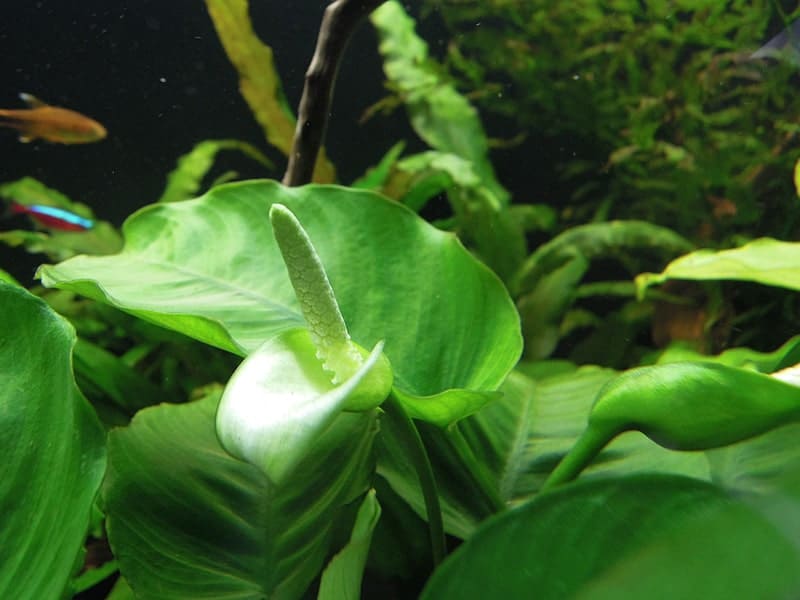
One of the best plants you can get is the Anubias Barteri, a hardy low light species that most fishes won’t eat. It’s perfect for beginners and experienced hobbyists alike, thanks to its ability to thrive in a wide range of water conditions.
Easy to maintain, this root feeder can even be partially submerged. You will find that the Anubias Barteri is best placed in either the background or foreground.
2. Java Fern: Great for beginners

When talking about the single most popular aquarium plants, the answer often falls to Java Fern. It’s a famous species and grows much slower than the Anubias Barteri but is tough and can withstand various conditions.
Even better, you can glue them onto surfaces to customize the aquarium landscaping. This is a foreground plant that won’t be eaten by most fish and a must-have for any low-light tank.
3. Java Moss: Best low-light moss
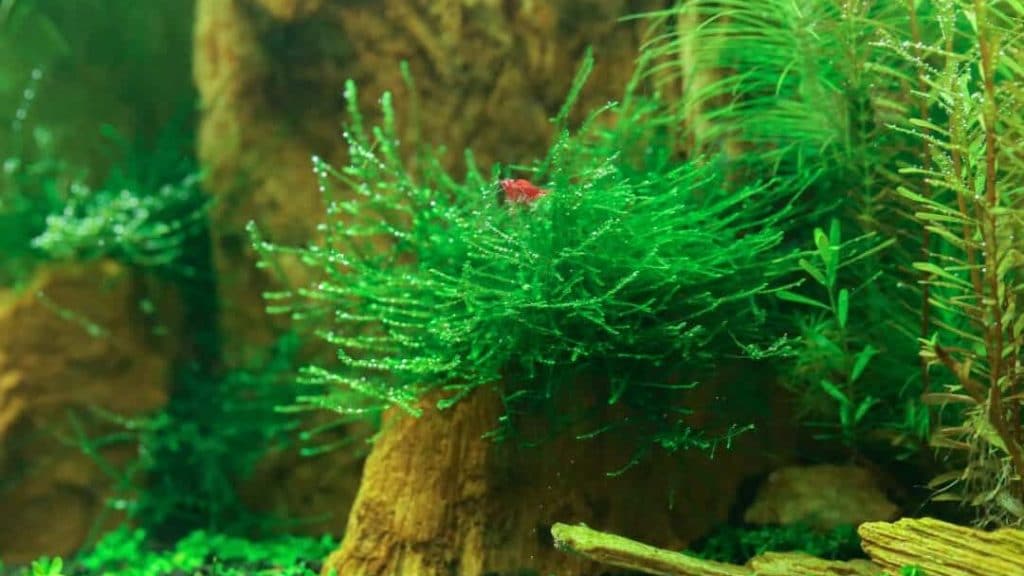
If you’re looking specifically for ferns to add to your tank, we cannot recommend Java moss enough. It is very hardy and can be great for carpeting the bottom of your aquarium.
This column feeder can attach to various surfaces, rocks, and driftwood. One of the best things about Java moss is that despite growing quickly, they can only reach a few inches in height. Not to mention that they’re compatible with most fish species.
4. Amazon Sword: Best background plant
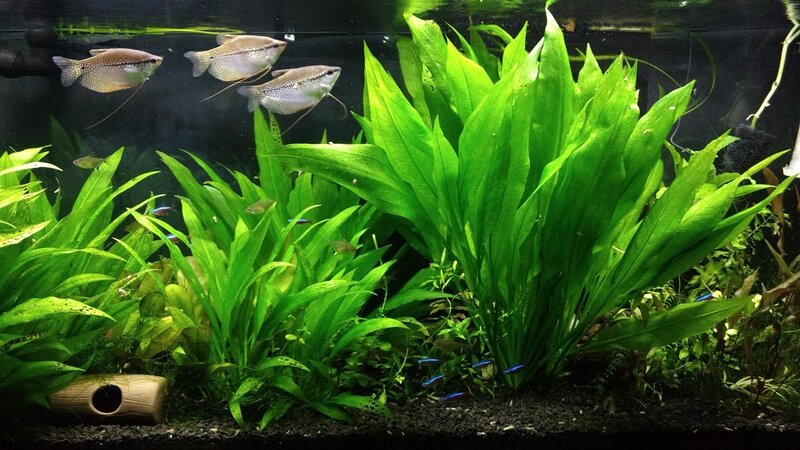
The Amazon Sword has got to be the best background plant you can find. Many people know them for their classic leafy look that can grow up very tall. You can also easily find them in any local aquarium store.
However, it does have a strong root system, so the Amazon Sword is best reserved for larger tanks with a deep substrate.
5. Duckweed: Best floating plant
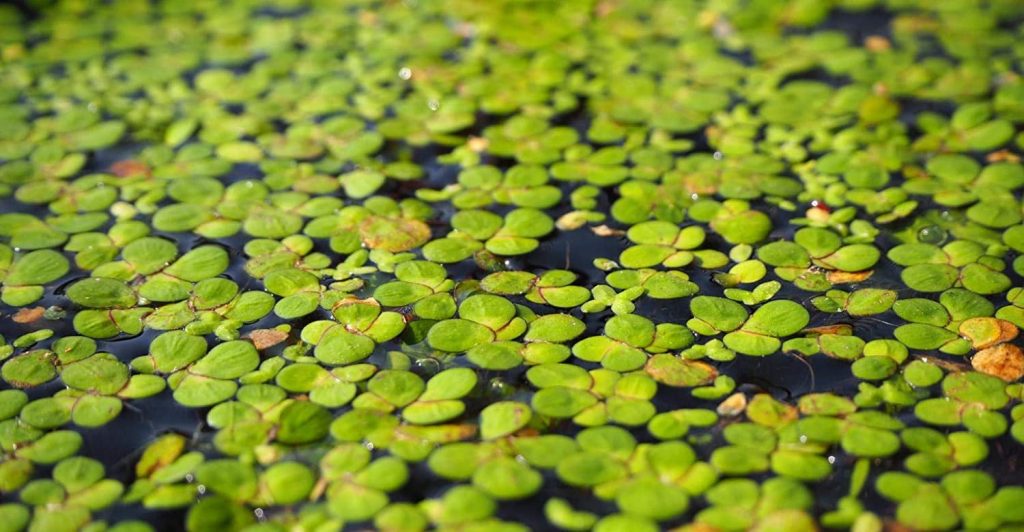
Duckweed is the perfect floating plant that is also beginner-friendly. There is no need to provide additional lighting than what you already have, while the small oval leaves can create a stunning green carpet on the surface of the water.
Additionally, it absorbs nutrients from the water and can prevent algae overgrowth. The downside is that duckweed may require a little more maintenance as the leaves can spread fast.
6. Marimo Moss Balls: Best value low-light aquarium plants
Do you want a plant that gives you the best value for money? Look no further than the Marimo Moss Balls. They are a hardy bunch that’s super easy to care for; all you need to do is keep the water clean and change it periodically.
We recommend Marimo Moss balls if you have shrimps and for any small tank. In the wilderness, these plants can live up to 200 years, so you know that they’ll last you for a long time!
7. Anacharis: Good food source

Anacharis is an excellent food source for certain fish species, most notably goldfish. It is one of the best low-light aquarium plants that is also easy to maintain.
Be careful! Anacharis grows very fast, even in low light, and is actually invasive and harmful for wildlife. In the aquarium, however, it can soak up nutrients from the water and makes for a good cleaner of dangerous chemicals.
8. Pearl Weed: Best carpeting plant
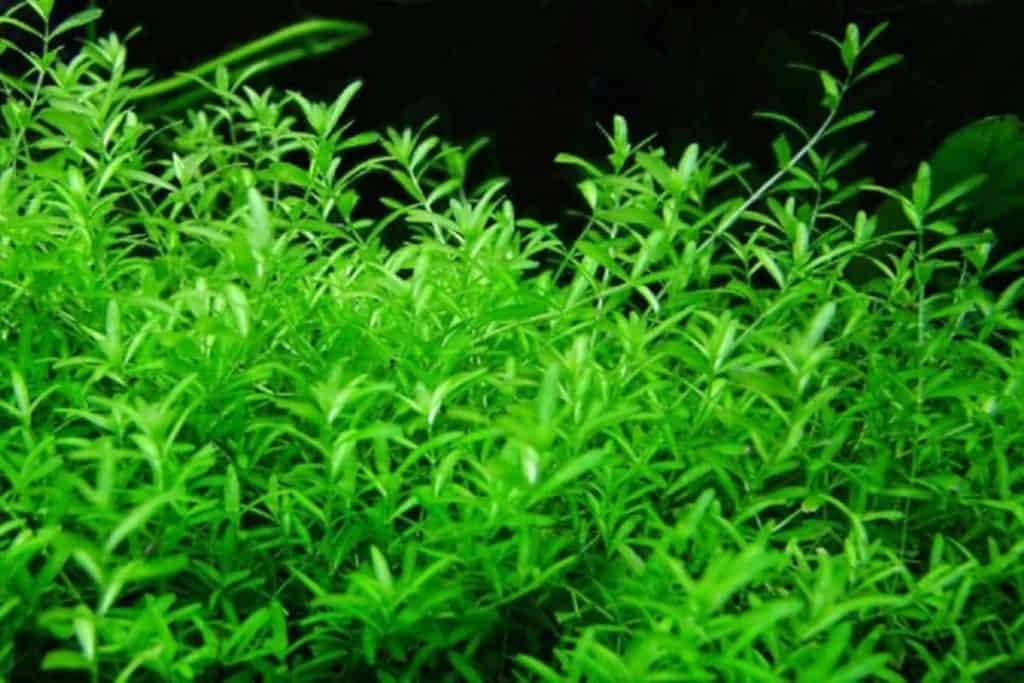
Having a good carpet is not only attractive, but it is also good for bottom dwellers. Included in our favorite low-light aquarium plants for carpeting is Pearl weed. It is a bright green plant with tiny leaves that you can use for foreground, midground, or background.
It does really well in low light and is fast-growing, so you may need to prune it from time to time. Oh, it’s also not difficult to propagate, which means beginners will love it!
9. Guppy Grass: Best for breeding tanks
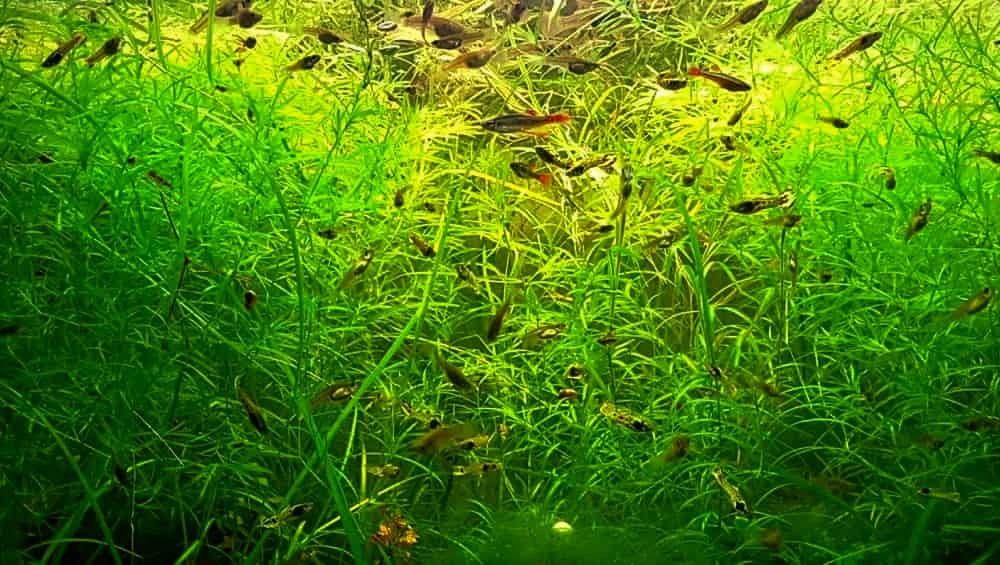
Guppy grass is for anyone creating a breeding tank, as its tall stems and narrow leaves are ideal for small species. While it can still thrive in low light, don’t be surprised if the leaves turn to a darker shade of green than usual.
Generally, guppy grass can grow in any aquarium where it can help remove heavy metals, toxins, and other harmful substances.
10. Rose Sword Plant: Beautiful red color

Next up, we have the Rose Sword Plant. This is a cousin of the Amazon Sword and sports a fantastic range of colors, from green and brown to red. The younger leaves usually have a beautiful pink or bronze color, which can make your aquarium look unique.
There are also not many plant species that can give you a red color without demanding much light. For that reason, many hobbyists turn to this plant species.
11. Water sprite: Great for cover and hideout

Another great plant that you can try out for providing shelter and cover is water sprite. Despite the bushy leaves, this plant doesn’t need too much light to thrive, which makes it perfect if you have timid fish species.
Because they’re a fast grower, they can quickly absorb any nutrients from the tank. They are also easy to find and purchase.
12. Bladderworts: Fast growing

A lot of aquarists adore bladderworts because they are fast-growing and do not need much light to survive. Other than that, it is also a unique carnivorous plant that can trap insects!
Despite being hardy and easy to care for, bladderworts still need some maintenance from your side. This will prevent them from growing out of control and filling up your entire tank, making it cramped.
13. Cryptocoryne: Best for low tech tanks

Especially for beginners, it is often more convenient to build a low-tech tank to start with. In that case, Cryptocoryne wendtii can be an ideal choice for you. It requires little light to grow to its fullest potential.
With large leaves in a striking green shade, this plant looks most at home in the background of an aquarium.
14. Dwarf Hygro: Easy maintenance

Most of the plants we have curated for our list today are easy to care for, but the Dwarf Hygro is especially so. It’s a common favorite among beginners, thanks to its gorgeous green look, affordable price tag, and simple maintenance.
This plant can survive in most conditions and low light, though we do recommend using fine gravel for the substrate. Its short height and leaves are also great for any bottom dweller in the tank.
15. Bucephalandra: Exotic low light plant
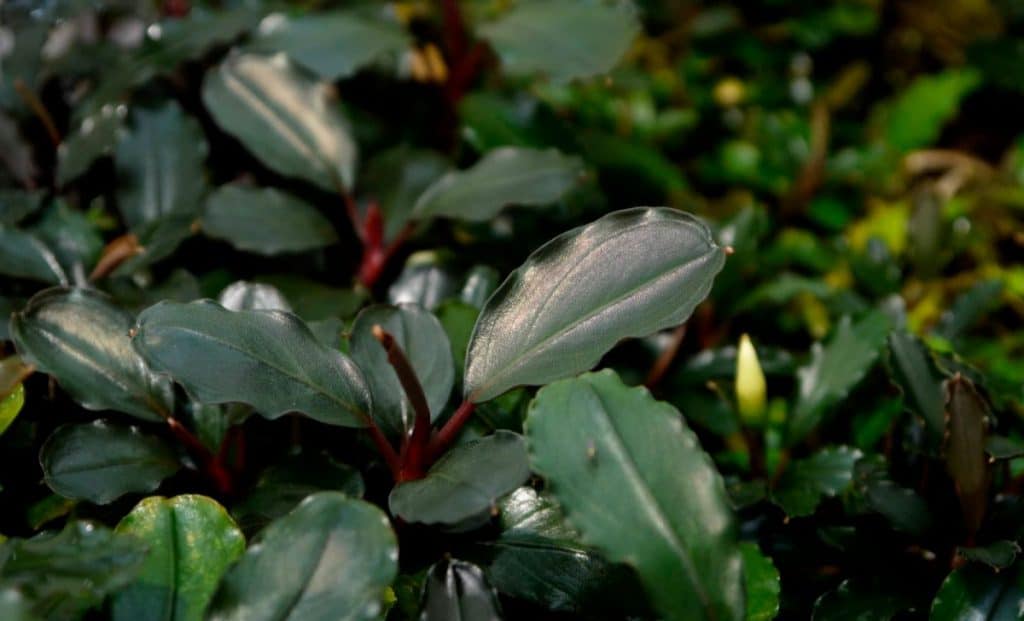
Relatively new to the world of aquatic landscaping, not many beginners know about Bucephalandra. It is because they are quite expensive and more difficult to find than some of the other plants we’ve talked about.
Even so, this slow-growing plant is truly stunning especially when you attach them to surfaces like rocks and driftwood.
16. Liverworts: Affordable low light plant
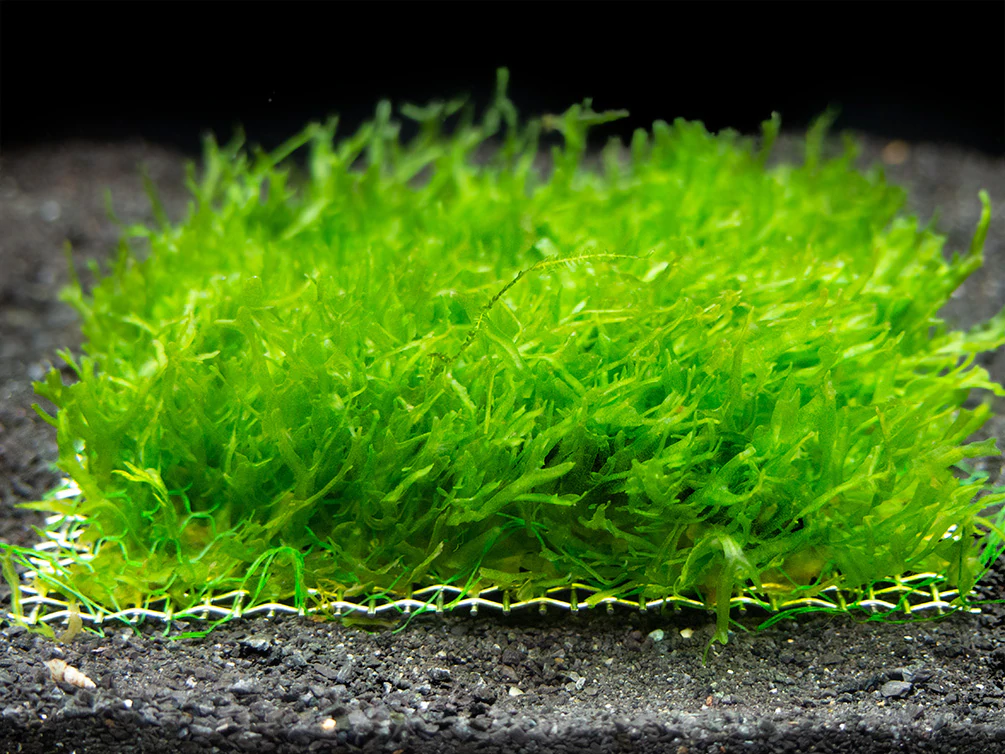
There is no need to splurge if you don’t want to, but it doesn’t mean that you cannot still create a lovely aquarium. Liverworts are affordable plants that are super hardy and actually thrive better in low light.
It is because the leaves can remain moist instead of drying out. Another great benefit to Liverworts is that you don’t have to care for them all that much!
17. Hornwort: Easy freshwater plant
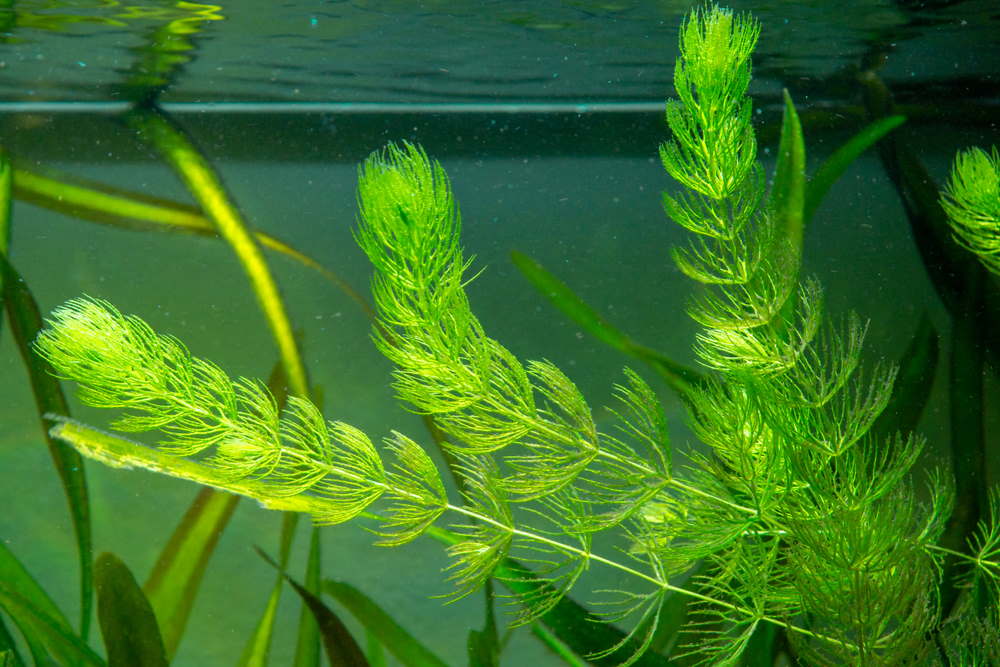
An easy freshwater plant that we completely adore is hornwort. It is fast-growing and can reach up to 10 feet in height, which means it is better for larger tanks.
A single plant of hornwort can produce many stems, making it an excellent choice for anyone looking to fill up their aquarium quickly.
18. Waterwheel plant: Aquatic snap trap
We’ve mentioned a carnivorous plant before, but the best aquatic snap plant for a low-light tank is the waterwheel plant. Guess what? They don’t actually rely on photosynthesis to survive. Instead, they feed on planktons and the water column.
This small, floating plant can add a unique characteristic to your aquarium. But you do need to ensure that there is enough food source in the water, like zooplanktons.
19. Lemon Bacopa

Lemon Bacopa is another special plant you might be interested in. It got its name from the lemon fragrance that you get when you crush the leaves.
The plant can develop small, beautiful lavender flowers when healthy, but aquarists often use it just for the lush foliage. You can supplement it with CO2 and fertilizers to encourage growth, especially when planting it in low light.
20. Vallisneria Americana (Eelgrass)

Eelgrass, also known by its scientific name Vallisneria Americana, sports a unique appearance with ribbon-like leaves. This is popular for beginners and easy to plant, while still offering a unique fluidity to the tank.
However, keep in mind that eelgrass is a fast grower and may need periodic pruning so that it doesn’t get out of control and take over the aquarium.
21. African Water Fern
Originating in the Congo River Basin, the African water fern is best suited for larger aquariums. It does grow slower when in low light and may need a warmer water temperature. But other than that, this plant species is easy to care for!
We also have to warn you not to place this plant with goldfish or cichlids.
22. Green Hygro
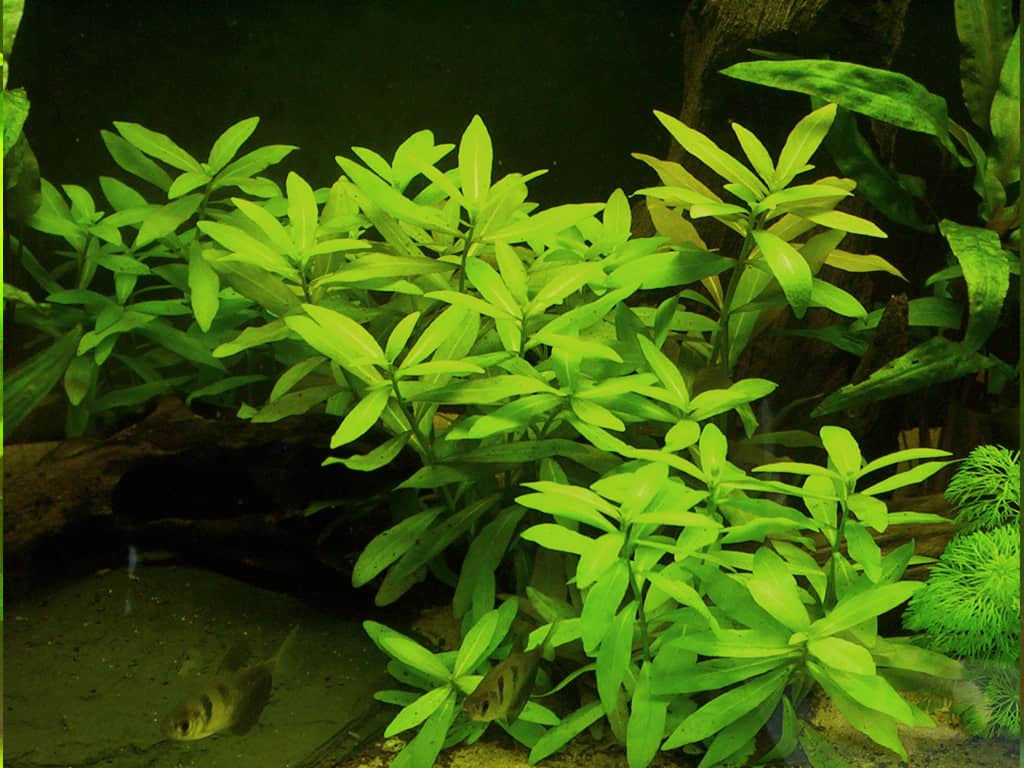
Here is another column feeder for you to consider. Green hygro is a hardy aquarium plant that needs some trimming as it grows quite quickly. It is unique because while it gets nutrients from the water, you have to still root the plants to the substrate!
The plant has a classic look of an aquatic species, with leafy branches that can make your tank look luscious and lively.
23. Dwarf Hairgrass
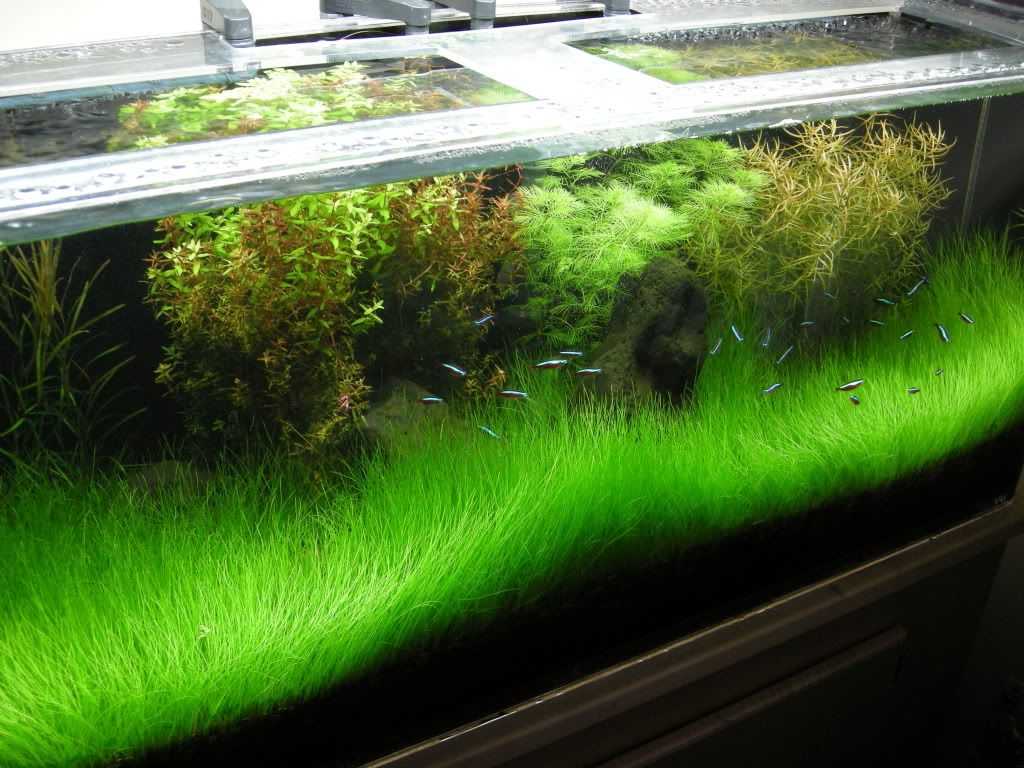
Dwarf hairgrass can give you the look of traditional grass that you might see on land. Recreating the look in a tank, you can certainly come up with a beautiful and striking landscape.
It has a green color that can complement any carpeting and grows to a maximum of 3 inches. This means you don’t have to worry about having to constantly prune the plant.
24. Ludwigia Repens
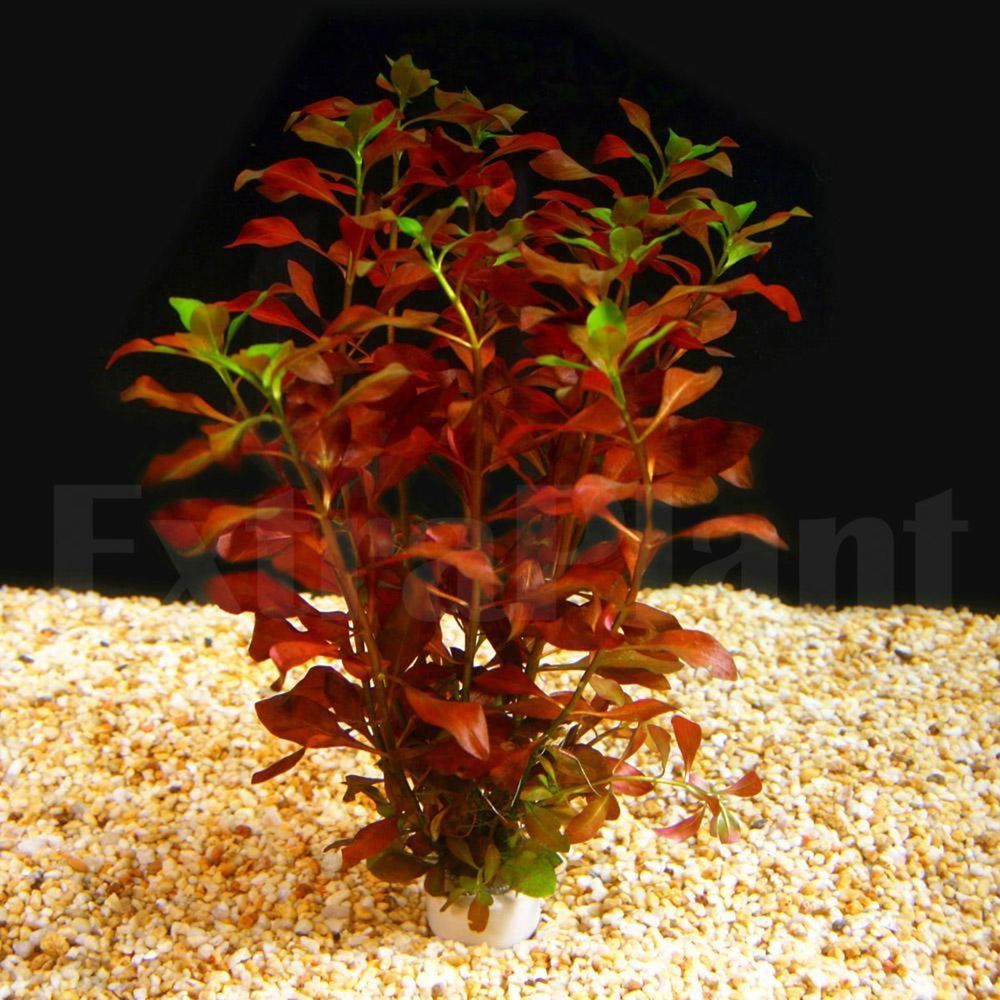
There is actually another red plant that you can try growing in your low-light tank: Ludwigia Repens. The only reason it’s not higher up the list is that while it can survive with low light, the plant still thrives best when you provide sufficient lighting.
With that said, it doesn’t require much attention and can be forgiving of a wide variety of conditions.
25. Anubias Nana
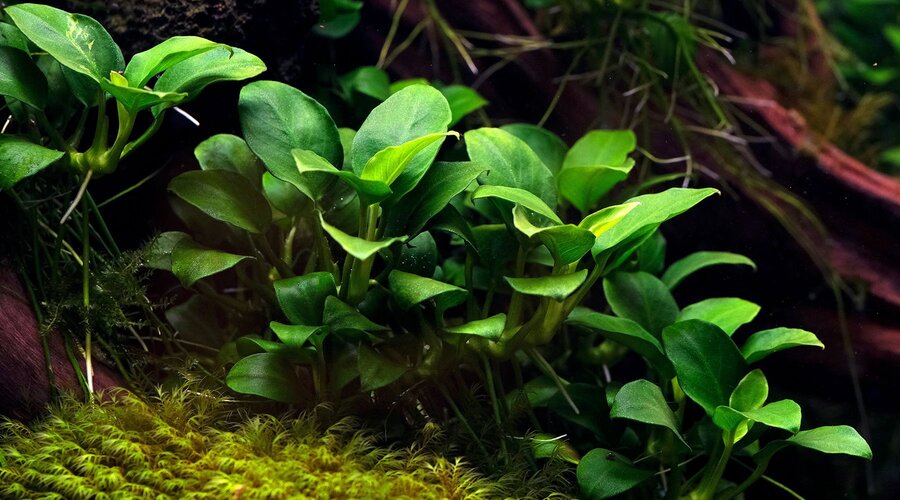
Like the aforementioned Anubias barteri, Anubias nana belongs to the same family and has similar pointed leaves. It is just as easy and simple to maintain, making it perfect for amateurs to grow.
Note that it feeds through their roots, which means you may want to make sure that the substrate in your tank is nutrient-rich.
Which low light aquarium plant are you getting?
So, that wraps up the ultimate list for low-light aquarium plants. You may be surprised by how many options there are for live plants that can survive in an aquarium with few light sources.
The key to keeping the plants healthy and thriving even without bright light is to ensure there are enough nutrients and CO2 levels. This will help with their photosynthesis process and keep them alive.
After finding out about the best aquarium plants to grow in low light, which one do you think you will go for?
Did we leave out any other interesting plant species?
Let us know in the comments below!









